#Cornell University Library
Text
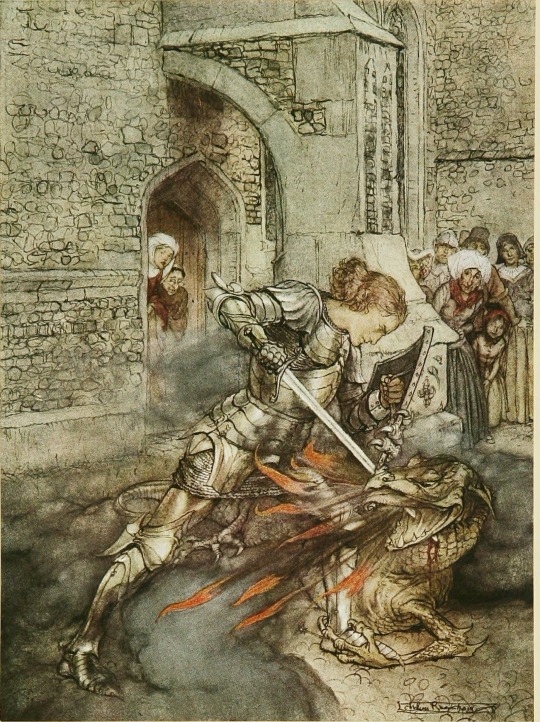
How Sir Launcelot fought with a fiendly dragon, illustration by Arthur Rackham from The Romance of King Arthur and His Knights of the Round Table, adapted from Sir Thomas Malory by Alfred W. Pollard and published by Macmillan in 1917
#art#art history#Arthur Rackham#illustration#Sir Lancelot#Lancelot#Lancelot du Lac#Arthurian legend#Arthurian mythology#Arthuriana#British art#English art#20th century art#Cornell University Library
1K notes
·
View notes
Video
n48_w1150 by Biodiversity Heritage Library
Via Flickr:
The Garland of the year, or, The months: their poetry and flowers : London :Marcus Ward & Co.,[1873]. biodiversitylibrary.org/page/58434928
#Flowers in literature#Months#Poetry#Cornell University Library#bhl:page=58434928#dc:identifier=https://biodiversitylibrary.org/page/58434928#flickr#april#daffodil#Narcissus#poem
6 notes
·
View notes
Photo

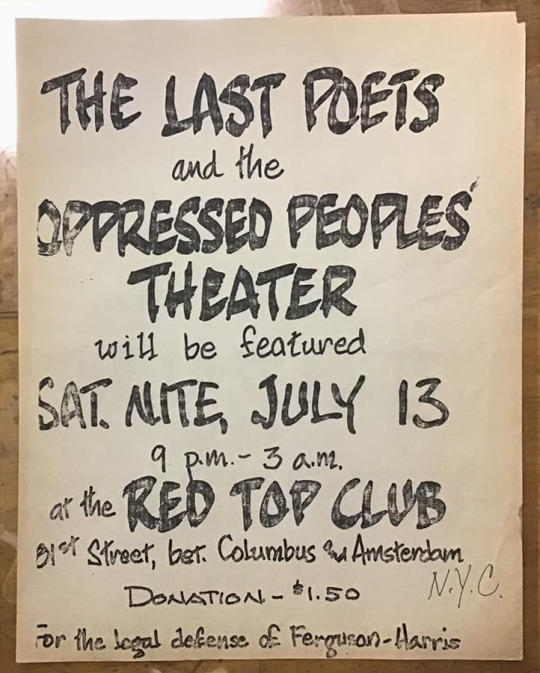
The Last Poets and the Oppressed Peoples' Theater will be featured Sat. nite, July 13.. at the Red Top Club, New York, NY, ca. 1969 [Hip Hop Flyer Collection, #8112m. Division of Rare and Manuscript Collections, Cornell University Library, Ithaca, NY]
#manuscript#art#music#poetry#handwriting#flyer#the last poets#david nelson#gylan kain#felipe luciano#red top club#cornell university library#1960s
26 notes
·
View notes
Photo
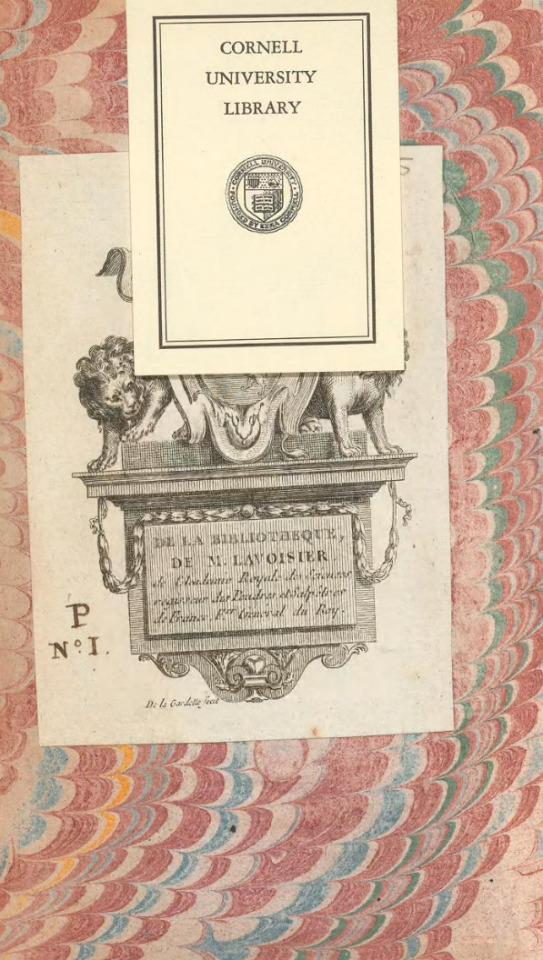
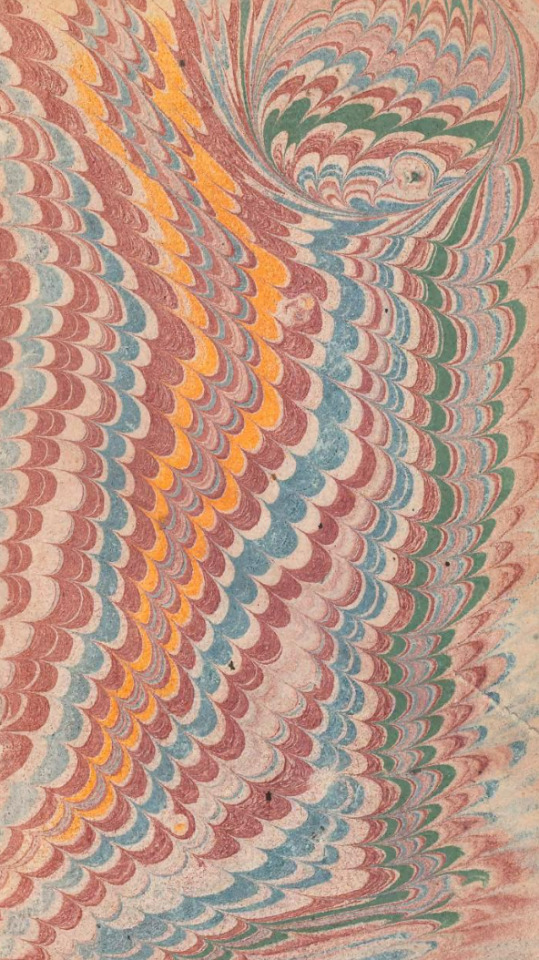
Cover pages from inside L'art de cultiver les pommiers, les poiriers, et de faire des cidres, selon l'usage de la Normandie. Louis Chambray. 1765. https://newcatalog.library.cornell.edu/catalog/2724750
#cornell#cornell university#Cornell University Library#cover page#title page#old book#vintage book#1700's book#rare book#rare books#bibliophile#fruit#textbook#vintage textbook#graphic design#art#bookmaking#book binding#book cover#vintage book cover#paper art#marble#marbled#marbled endsheets#endsheet#end sheet
6 notes
·
View notes
Text
Pomodoro and Cornell study technique: PART 1
having an exemplary method for taking and reviewing notes is imperative if you want to improve your understanding of the material covered in class.
Cornell note-taking method
what is it
the Cornell method is a note-taking method that aims to improve grades by creating a more efficient note-reviewing system
the process
the page is split into three distinct sections (the note-taking area, the cue column and the summary area) and each has a specific purposes
during the lesson notes should be recorded within the "note-taking section". in this section of the page aim to write notes that are as complete and informative as possible. when you get to summarizing the notes, it will be helpful as you will have more to work from
the cue column is the area to the side of the page where words that are specific but relatable to the notes go. this column plays a major role when it comes to reciting the information and assessing how much of the information you truly understand. these words should act as gentle reminders or prompts for the content covered in the "note-taking area". filling in this column should be left until after class when more time can be allocated to thinking of a suitable word
the summary should reiterate the content from the "note-taking area" and rephrase it in a simpler way that uses fewer words. it can be found at the bottom of the page and makes it easier, at a glance, to see what is covered in the notes
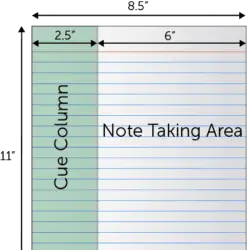
why use this method
as you can see due to the colour coding each section works together in this method to achieve the 5 R's of studying
record
recording meaningful facts and ideas in the "note-taking section". at this point, it doesn't need to be neat. just an area to quickly get important information down
reduce
in the clue column choose a specific relevant word for each paragraph to act as clues for what the paragraph as a whole is talking about. This helps to clarify meanings, reinforces continuity and improves memory
recite
cover up the note-taking section and, using those "specific relevant words " in the clue column try and write down the information from the notes from memory. using this method of reciting means that you can visibly see the gaps in your knowledge
reflect
find out how the notes are relevant to your course of study or class and make your own opinions on the process or organisation. Knowing its relevancy helps to avoid it being forgotten as it implies that you have a deeper understanding of the matter
review
spend at least 10 minutes a week going over the notes and testing yourself on the subject matter in order to fully ensure that you understand
the website used to gather this information
#university#study tips#studyblr#Cornell method#uk universities#studying#study notes#student life#studywithme#study motivation#future reference#for later#save for later#higher education#study hard#studygram#study space#zoology#libraries
34 notes
·
View notes
Text
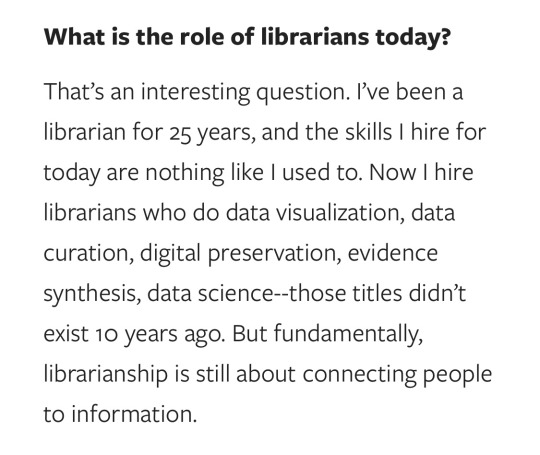

Been super interested in reading more about how more established librarians view the future of our work and spaces.
~Including a picture from working at the public library the other day, which I should do more often~
#cornell#cornell university#library#university librarian#academic library#research library#research librarian#academic librarian#academic libraries#college#studyblr#study break#study#books#university#school#studying#library and information science#master of information#public library#public libraries#work from home#work from library
5 notes
·
View notes
Text
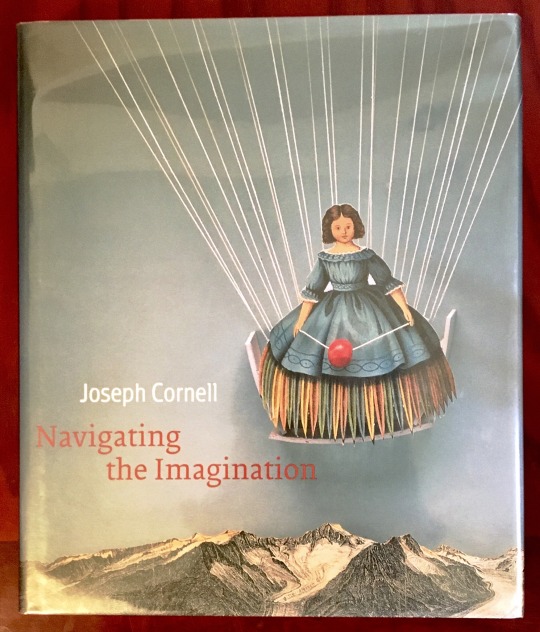

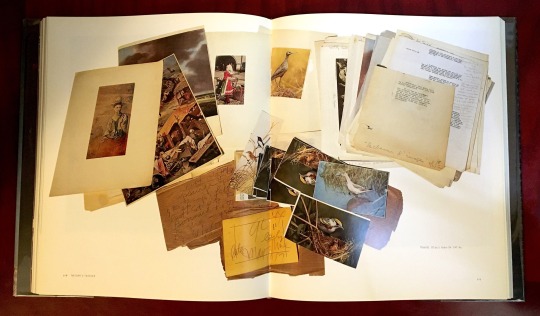
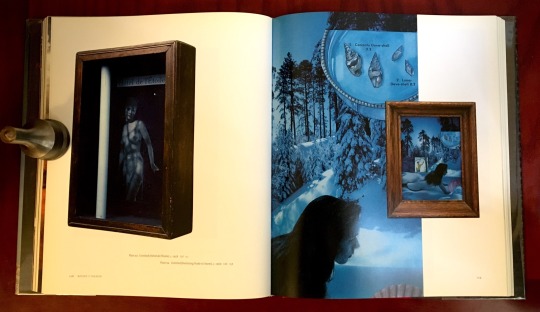
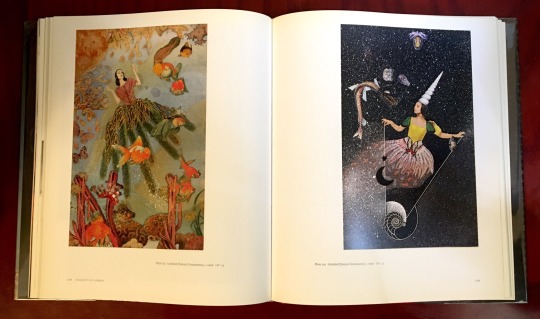
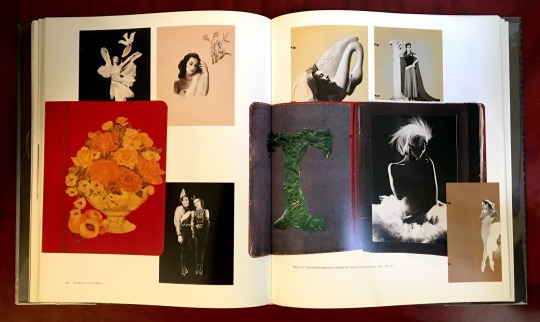
Book 385
Joseph Cornell: Navigating the Imagination
Lynda Roscoe Hartigan
Peabody Essex Museum / Smithsonian American Art Museum / Yale University Press 2007
Published to accompany a traveling retrospective of Joseph Cornell’s (1903-1972) work in 2007 and 2008, this book is a beautiful tribute to an artist whose work defies easy categorization. Of the two large-format books I own about Cornell, I would have to give the edge to this one in terms of which is the better book. First off, this one is beautifully bound in full red cloth. Secondly, it offers much more of Cornell’s illuminating source material, some rarer pieces that are not usually reproduced, and even includes some previously unpublished art.
#bookshelf#illustrated book#library#personal library#personal collection#books#book lover#bibliophile#booklr#joseph cornell#navigating the imagination#Lynda roscoe Hartigan#Peabody essex museum#smithsonian american art museum#Yale university press#Art
2 notes
·
View notes
Photo

Uris Library, Cornell University, New York
1 note
·
View note
Text
So hey, to anyone who does femme historical fashion anywhere between 1885 and 1950-
Cornell University has the entire archives of Good Housekeeping up from that time period. And Good Housekeeping used to have English-language fashion plates with clear instructions as to fabric, colour, and cut.
They were ads for the personal shopping service Good Housekeeping apparently??? ran around this time???? and they are a fucking goldmine if you're remotely interested in fashion history or if you're looking to build a 20th century historical wardrobe.
Just, like, look at this?????
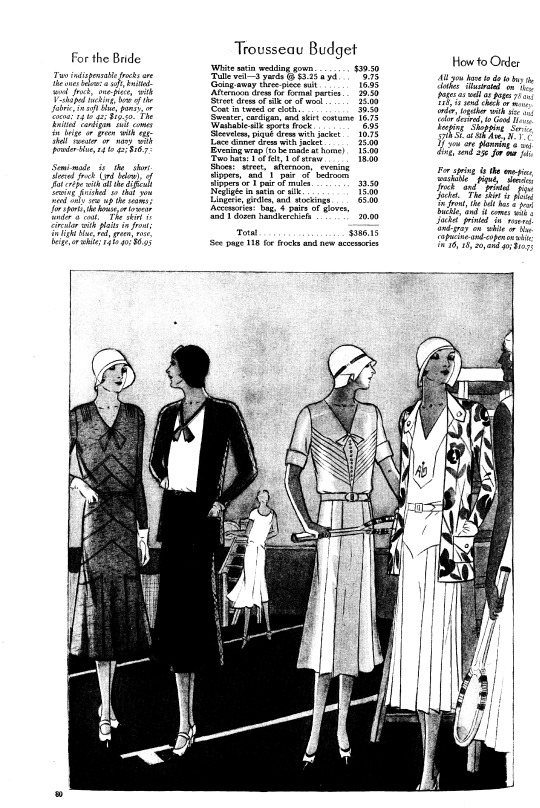
An itemized layout of every piece of a young bride's (aspirational) wardrobe in 1930. Including prices. And then below it, a fashion plate, with English-language descriptions of what all these things are and what fabrics they're made of. And an ad for Good Housekeeping's fucking personal shopping service again. XD
IDK, most people who do historical fashion on any kind of serious level probably already know about this??? but I didn't and was stunned and overjoyed to find out that this existed. my research at the library gave me a bunch of high-level overviews that weren't helpful for more than colour and cut.
SO YEAH. THANK YOU CORNELL UNIVERSITY.
2K notes
·
View notes
Text

A.D. White Library at Cornell
0 notes
Photo




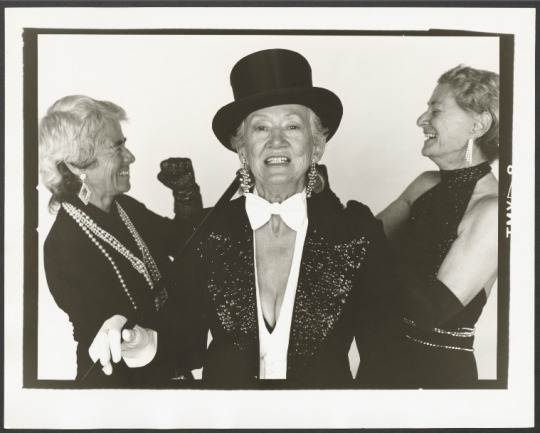


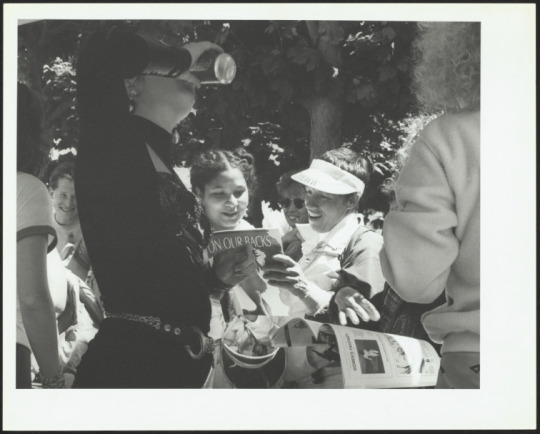
the cornell university library has digitized its really incredible 2022 exhibition “radical desire: making on our backs magazine”––cannot recommend strongly enough taking a look at the fascinating and funny and sexy and bittersweet collection of materials curated here
On Our Backs magazine launched in San Francisco in 1984 promising, per the tagline on the cover, “entertainment for the adventurous lesbian.” The photographic images on the cover and throughout were central to its mandate to deliver sexual content for lesbians. The photography also created the greatest difficulties for the magazine’s circulation at a moment when many feminist leaders decried pornographic photographs and film as a form of violence against women. This exhibition presents original photographs created for On Our Backs during its first decade. Made by staffers and freelancers, professionals and amateurs, members of the magazine’s inner circle and its far-flung readership, they convey the fantasies, imagination, humor, rigor, radicalism, political engagement, and ethos of community-building and inclusion that defined On Our Backs and made it a touchstone in the queer press. Additional photographs and documents elucidate the political and erotic contexts into which the magazine emerged, the women behind it, and their business practices and strategies. All materials are drawn from Cornell Library’s Human Sexuality Collection.
Exhibition curators: Kate Addleman-Frankel, Gary and Ellen Davis Curator of Photography, Johnson Museum of Art, and Brenda Marston, Curator of the Human Sexuality Collection, Division of Rare and Manuscript Collections.
4K notes
·
View notes
Text

The Grassmarket, Edinburgh, circa 1865, with the majestic silhouette of Edinburgh Castle gracing the horizon. Step back in time with this captivating glimpse into the past, where history unfolds against the backdrop of an iconic Scottish landmark.
Photo: Cornell University Library
225 notes
·
View notes
Video
n7_w1150 by Biodiversity Heritage Library
Via Flickr:
Paintings of wild apples and wild pears collected by Russian botanists.. [Russia],. biodiversitylibrary.org/page/55916798
#Apples#Drawings#Pears#Pictorial works#Soviet Union#Watercolors#Cornell University Library#bhl:page=55916798#dc:identifier=https://biodiversitylibrary.org/page/55916798#CornellCider#flickr#wild pear#wild pears#middle asia#pyrus#botanical illustration#scientific illustration
2 notes
·
View notes
Text

Decorative cover of 'The English Flower Garden' by William Robinson.
Published 1905 by J. Murray.
Cornell University Library
archive.org
361 notes
·
View notes
Text
Lorenzo Langstroth unvarnished

Lorenzo Langstroth, 1890. From Langstroth on the hive & honey bee, rev. by Dadant. 1892.
December 25th, Christmas Day, is a day for sharing and giving. It also happens to be the birthday of a man known as the father of American beekeeping: Lorenzo Langstroth, born Philadelphia, Pennsylvania in 1810. With both happy occasions in mind, Mann Library is pleased to announce a resource that we’re pretty sure students of beekeeping and its history will find a wonderful gift: a fully digitized, searchable copy of Langstroth’s handwritten personal journal. Where a researcher would have once had to make an in-person trip to our special collections reading room to attempt a deciphering of Langstroth’s (infamously difficult to read) handwriting, the journal is now freely available (and actually readable!) as both a digitized version of the original work and in a transcribed form as part of the online Biodiversity Heritage Library.
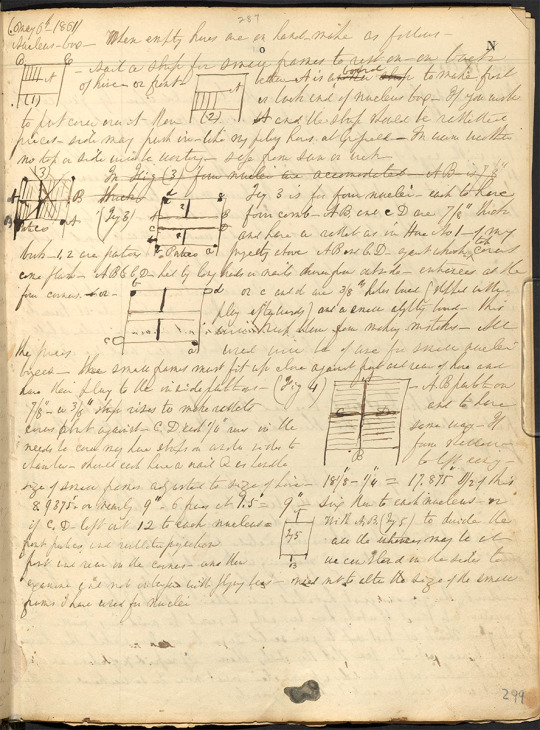
Page from "Journal on matters relating to bees, etc.," unpublished manuscript, Lorenzo Langstroth 1852-1895. in the special collections of Albert R. Mann Library, Cornell University.
For those not yet fully in the know, Lorenzo Langstroth looms large in American beekeeping history thanks to discoveries and inventions he made as a self-taught apiarist, innovations which essentially revolutionized the 19th century practice of beekeeping in North America and facilitated its development into the profitable industry of today. His guide on beekeeping, The Hive and the Honeybee, was first published in 1853 and remains in print even today. Langstroth’s story is also poignantly notable for a reason that you don’t have to a be a beekeeper to appreciate deeply: his struggles with debilitating depression, which stymied many of his professional endeavors. While working intermittently as a pastor and teacher when his mental health allowed, Langstroth found constant, life-affirming inspiration in the bee world he observed closely through the prism of the hives he kept for most of his adult life.
The history of beekeeping stretches back to prehistoric times, but when Langstroth patented his movable frame beehive in 1852 it created a worldwide revolution in the practice of keeping bees. On this page of his journal, we see the exact moment—the “aha” moment—that Langstroth landed on his brilliant insight: the significance of applying the concept of "beespace" to design hives that allow easier harvesting of honey than possible in earlier hive structures. The rest, as they say, is history.
The journal Langstroth kept is a treasure for several reasons. It provides fascinating insight into pivotal moments of beekeeping’s technological history. It is, as well, an intimate view of resilience in face of sometimes devastating mental health challenges. And last but really not least, in the comments and pet peeves that Langstroth also recorded in his ongoing notes-to-self, his off-the-record writing offers a more mundane but no less instructive tour through the day-to-day concerns—from keeping bee hives productive to the vexing challenges of protecting trade secrets and securing patents for promising new discoveries in a timely way—that would have been top-of-mind for any aspiring agricultural entrepreneur of the 19th century.
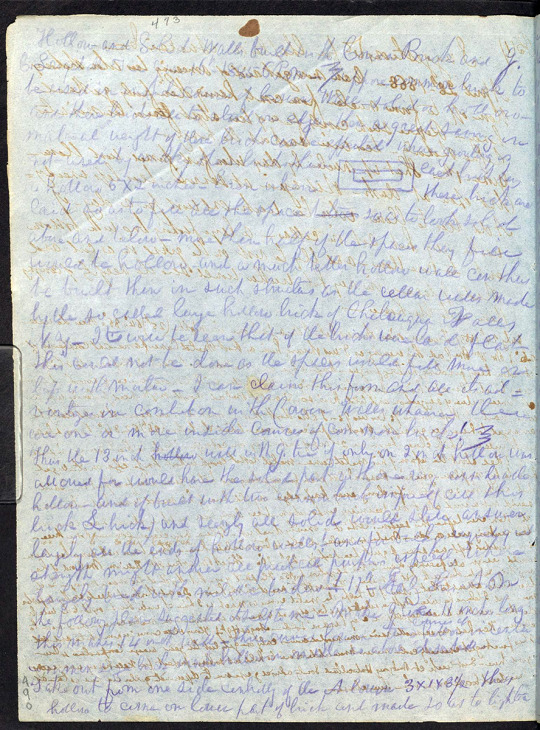
Page from "Journal on matters relating to bees, etc.," unpublished manuscript, Lorenzo Langstroth 1852-1895. in the special collections of Albert R. Mann Library, Cornell University.
The online availability of Langstroth’s journal in both its handwritten and transcribed form has been a work very long in the making. When early 20th century entomologist Everett Franklin Phillipps joined the Cornell faculty 1924, he made it his mission to establish one of the world’s most important collections of beekeeping materials—now known as the E. F. Phillips Collection at Mann Library. Recognizing the importance of one of this collections’ gems—the Langstroth journal—for the beekeeping field, Phillips began the painstaking process of transcribing 600 pages of its cramped, highly slanted script—rendered even more illegible by the frequent ink bleed-through from other pages—into easily readable typescript. The project remained unfinished at the time of Phillips passing in 1951, and others took up the work intermittently over the following decades. But it wasn’t until the epic pandemic-era national lockdown of 2020 that intrepid collections specialist Betsy Elswit finally found herself with the time needed to finish transcribing of the journal's final 200 pages. Thanks to this heroic work, a browse through the work on the Biodiversity Diversity Heritage Library today provides a look at Langstroth’s original writing with a side-by-side view of transcribed, machine-readable text. Thank you Betsy! And thank you, Reverend Langstroth, for persevering through the inspirational highs and deep lows of life to impact the practice of beekeeping so profoundly, and to leave us such a rich record of such remarkable scientific observation and personal achievement.
And with that, we leave you with our best wishes for a good, hope-filled winter holiday season!
#Langstroth#beekeeping#beekeeper#apiculture#mann library#cornell university#rare books#vintage book#archives#mental health#agricultural history#special collections#bees#honey#apiary#honey bees
11 notes
·
View notes
Text

At this point, it's hard to tell if people like this are profoundly stupid, extremely lazy, deeply antisemitic (while trying to pretend they're not), or a combination of all three. 🙄
Since we're here, and this bozo wants examples of Antisemitism from the Left because they can't be arsed to do any research for themselves, here are some examples since the October 7th attack:
A Spike in Antisemitic Hate Crimes in London since the October 7th attack
Rise in Antisemitism in New York City
A man punching a woman for possibly being Jewish
Free Palestine users harassing a 97 year old Jewish Holocaust Survivor on TikTok (as well as bullying other Jews on social media)
Pro-Palestine protestors in Toronto attacking Jews
Threats to kill and rape Jewish students at Cornell University
Paris Subway Passengers screaming "Fuck The Jews......We are Nazis and Proud"
Twitter/X screenshots of Antisemitism from the Left
Leftist Tumblr users coming onto an Israeli LGBT woman's blog telling her "she deserves to die" (and other vile comments)
London Holocaust Library being defaced with Pro-Palestine slogans, and a Jewish Cemetery being defaced with a Nazi swastika and the ceremonial hall being set on fire
Bomb threats and attacks on Jewish synagogues
More reported cases of antisemitism
The latest cases of antisemitism (as of this week)
Jewish Students Assaulted (and Jewish Student Center Vandalized)
MSNBC calling out the rise in antisemitism on college campuses
Multiple attacks on Jews where people were either screaming "Kill the Jews" or "Gas the Jews" or defacing Holocaust memorials and other vile antisemitic acts
The infamous video of University Presidents who couldn't answer a simple "yes or no" question about whether calling for the genocide of Jews constitutes bullying and harassment
I could list other examples and links I have on file of Antisemitism from the Left (and I'm sure others can highlight examples I either didn't cover or might not know about), but I've made my point: If whenmagicfilledtheair actually gave a crap about this, they would have put in the work to look up these cases up for themselves. They are willfully turning a blind eye because it's convenient for them to do so.
whenmagicfilledtheair is antisemitic and doesn't want to own up to that. This also applies to others on the Left right now who are being downright sociopathic in their treatment of Jews.
#tgh opinions#antisemitism#antisemitism from the left#whenmagicfilledtheair#jumblr#antisemitism on the left#'i'm antizionist not antisemitic' my ass 🙄#leftist hypocrisy#leftist morons#social issues
371 notes
·
View notes
